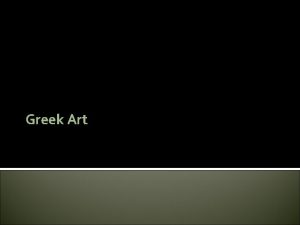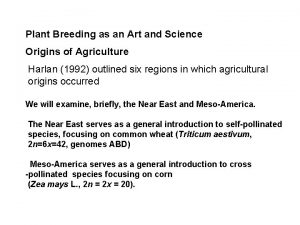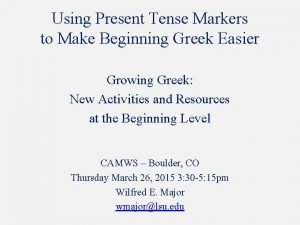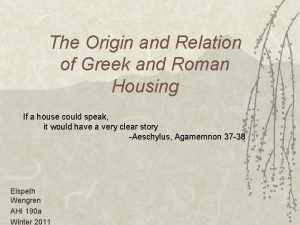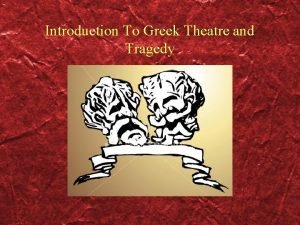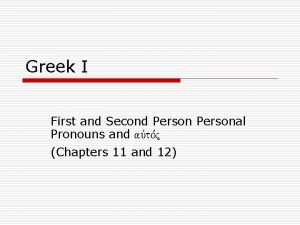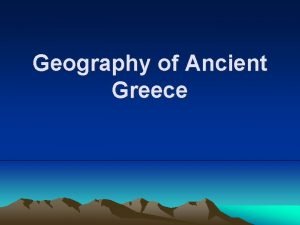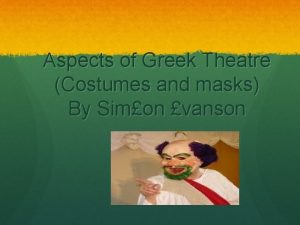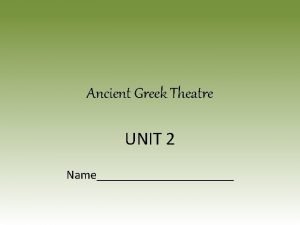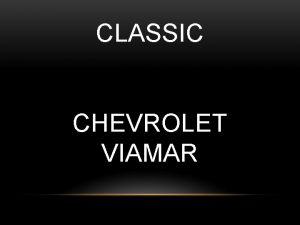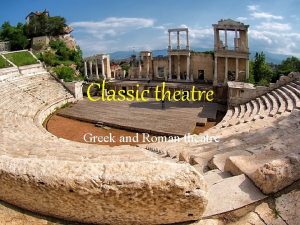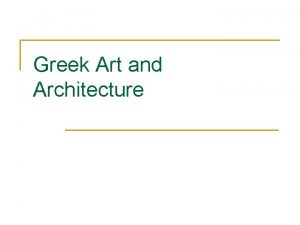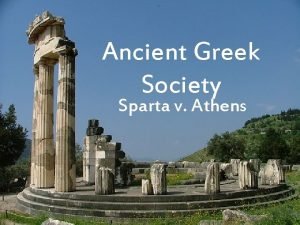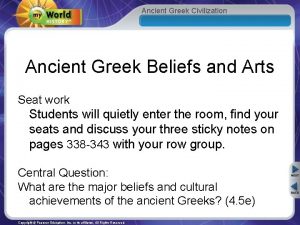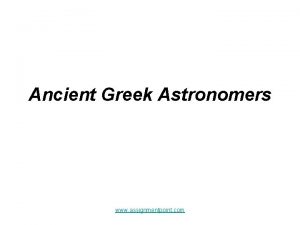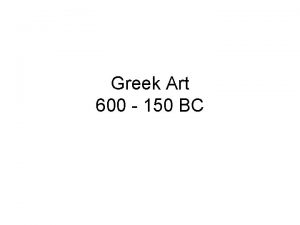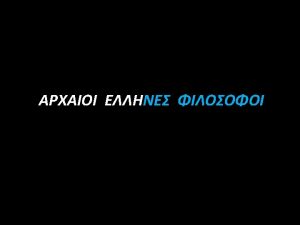Ancient Greek Art Greek art Considered the classic
















- Slides: 16

Ancient Greek Art

Greek art • Considered the classic art • Three types of artforms dominated this time period: Sculpture, temples/architecture and painted vessels • Sculptures idealized Greek values of strength and youth • Temples/Architecture celebrated the gods • Painted vases depicted athletic competitions and battles

Sculpture • 3 time periods in Greek sculpture • Archaic, Classical and Hellenistic • Greeks had a large supply of marble for sculptures

Archaic • 600 to 480 BC • “Stiff and ridged” appearance • Influenced by Egyptian sculpture

Classical • Sculptures were more “realistic” • Portrayed the human body with draped cloth and robes • Sculptures had a sense of movement • Idealistic concept of human figure…almost formulaic in approach to creating the “ideal human figure”


Hellenistic • Approx. 300 BC • Sculptures sought to portray strength, youth and courage • Greek gods were portrayed in the same manner as the humans…same size, not larger • Greek stories of the gods possessed human characteristics,


Vase Paintings • Paintings done in black on red or red on black…. • Process of scratching into surface of paint to reveal under color



Temples & Architecture • 3 major forms of architecture: Doric, Ionic and Corinthian • Identified via columns • Doric: ring under square platform, square/rectangular structure of building • Ionic: two scrolls on either side, square/rectangular structure of building • Corinthian: elaborate detailing on upper column, round structure of building



Resources • http: //www. historylink 101. com/lessons/art_ history_lessons/greek_art. htm • http: //www. google. com/images? rlz=1 T 4 ADSA_en. US 375 US 377&q=greek+vase+paint ing&um=1&ie=UTF 8&source=univ&ved=0 CCc. Qs. AQw. AA&imgtype=i_similar&sa=X&ei=a. Vi. OTNQDYH_8 Abt 16 Gl. Cg&ct=img-siml&oi=image_sil&resnum=4&tbnid=7 f 0 ww. Ut. Nn. Rc. KZM: • http: //static. howstuffworks. com/gif/parthen on-and-the-acropolis-landmark-1. jpg

critique • Describe the art: shapes? Lines? Any negative space? Subject? Color? Material? • Analyze: How did the artist use the info above? • Interpret: what is the artwork about and what function does it serve? • Judgement: how successful is it?
 Classical greek art characteristics
Classical greek art characteristics Greek music instrument
Greek music instrument Ancient time ancient means of communication pictures
Ancient time ancient means of communication pictures Ancient india vs ancient china
Ancient india vs ancient china Plant breeding is an art and science
Plant breeding is an art and science Ancient greek vowels
Ancient greek vowels Prostas greek architecture
Prostas greek architecture Ancient egypt floral design
Ancient egypt floral design Introduction to greek tragedy
Introduction to greek tragedy French rococo floral design
French rococo floral design Ancient greece theatre masks
Ancient greece theatre masks Auvto
Auvto Hellas in greek letters
Hellas in greek letters Greece map mountains
Greece map mountains Ancient greek theatre costumes
Ancient greek theatre costumes Theatre of dionysus diagram
Theatre of dionysus diagram Ancient greek theater
Ancient greek theater
